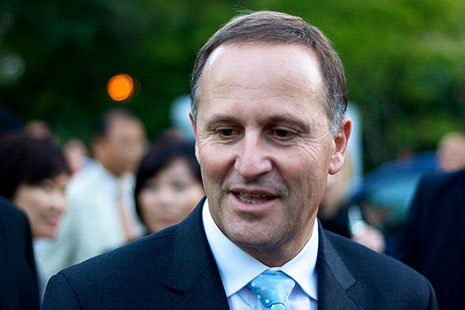IN July 2008, according to Newspoll, more than 80 per cent of Australians supported the introduction of an emissions trading scheme. Obviously Kevin Rudd had carried the Australian people along with him at least that far since, during the 2007 election campaign, he uttered the now (in)famous words, “Climate change is the great moral challenge of our generation.” But from mid 2008 it was downhill all the way.
At the same time as Newspoll was questioning Australians, New Zealanders were being asked a similar question – did they support the Clark Labour government’s proposed ETS? Only a third of New Zealanders did. And yet, just two years later, after a change of government and revised legislation from the Key National government in late 2009, the major components of New Zealand’s ETS regime commenced on 1 July.
So why has New Zealand been successful in implementing an ETS when Australia has failed?
For a start, under New Zealand’s unicameral system, the Key government does not have Senate-style hurdles to overcome. But it does have two alliance partners – the ACT party to its right, and the Maori Party to its left – to negotiate with on individual pieces of legislation. On this occasion, the ACT party opposed an ETS but National was able to negotiate an agreement with the Maori Party. National’s concessions to the Maori Party included halving the ETS rate for the first two years, which means that the fixed price during this period will be only $12.50 per tonne of emissions (about A$10). This is expected to reduce the cost for an average household to about $165 per year.
Cynics could argue that the two-year concession is simply to get the Maori Party past the 2011 general election, but by supporting this year’s increase in the GST (from 12.5 to 15 per cent, commencing in October) that party has already set itself up for election attacks that it hasn’t sufficiently looked after its core constituency.
Another reason for the relatively peaceful introduction of an ETS is that, in reality, it is ETS-lite. Apart from halving the ETS rate during negotiations, Key also exempted the country’s major carbon emitter – agriculture – from the scheme for the first five years, and after 2015 that sector will continue to receive major subsidies for many years to offset the costs of participation. Other industries engaged in international trade will also receive exemptions from full participation in the scheme.
While one of the major issues in Australia has been the potential impact of an ETS on the resource industry, in New Zealand it is the farming lobby that can heavily influence National governments. The agriculture sector accounts for half of the country’s carbon emissions, and this proportion should increase if the intended effects of the ETS – a reduction in emissions – materialise in other sectors.
Although the Kiwi ETS is very much a watered-down version of the ideal, there does appear to be genuine bipartisan support for an ETS of some sort. Although the Labour opposition leader, Phil Goff, has been critical of the long-term impacts of the current ETS on families and small business, he favours amending the scheme to remove the subsidies inherent in the government’s scheme, rather than doing away with it altogether.
In a poll out last week from Research New Zealand, 49 per cent of the population supported the government’s ETS. But this support dropped to 37 per cent when it was explained to respondents that they would be paying more for goods and services, such as petrol (up about 3 to 4 cents a litre) and power bills (up by about 5 per cent). The hip pocket remains an important factor when it comes to supporting the environment. Even more interesting was the finding that two-thirds of respondents would economise to avoid the higher charges; while this may not be great for the economy, it indicates that the goal of reduced emissions may be achievable.
The New Zealand ETS’s impact on saving the planet will be minimal, as New Zealand currently accounts for only 0.1 per cent of the world’s emissions. (Australia accounts for 1.3 per cent.) But the country usually doesn’t shy away from showing leadership on environmental initiatives (for example, the ban on nuclear warships since the 1980s). The ETS in its current form is far from ideal, but at least it is a step – a step that Australia has been unable to take.
New Zealand is the first country outside the European Union to introduce an ETS, and in last week’s poll well over half of respondents (58 per cent) were happy for the Key government to lead by example. Now, if only the government would drop its plans to allow mining in national parks, perhaps the country’s clean, green image could be maintained. •




